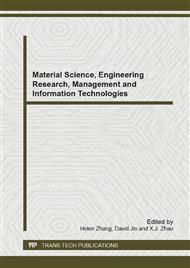p.239
p.243
p.247
p.253
p.259
p.264
p.270
p.274
p.279
Environmental Research on the Effects of Fenton Reaction Conditions on the Dehydration Properties of Lake Dongting Mud
Abstract:
Alternative conditioning of gel-like dredged sludge using Fenton reagent (H2O2/Fe2+) was examined in this study. Specific resistance to filtration (SRF) was used to evaluate sludge dewaterability.The optimization of the major operational parameters such as the dosage of H2O2 and Fe2+and the reaction temperature and time had been considered.The results demonstrate that Fenton oxidation conditioning was a practical and feasible method to the super water retention sludge. The optimum values for H2O2 , Fe2+and pH are 50 mg g-1 DS-1(dry solids), 6.25 mg g-1 DS-1 and 6, respectively, at which the SRF reduction efficiency of 76.09% can be achieved at room temperature of 5 min reaction time, which leading to big flocs or particles into smaller ones.
Info:
Periodical:
Pages:
259-263
Citation:
Online since:
June 2014
Authors:
Keywords:
Price:
Сopyright:
© 2014 Trans Tech Publications Ltd. All Rights Reserved
Share:
Citation:


